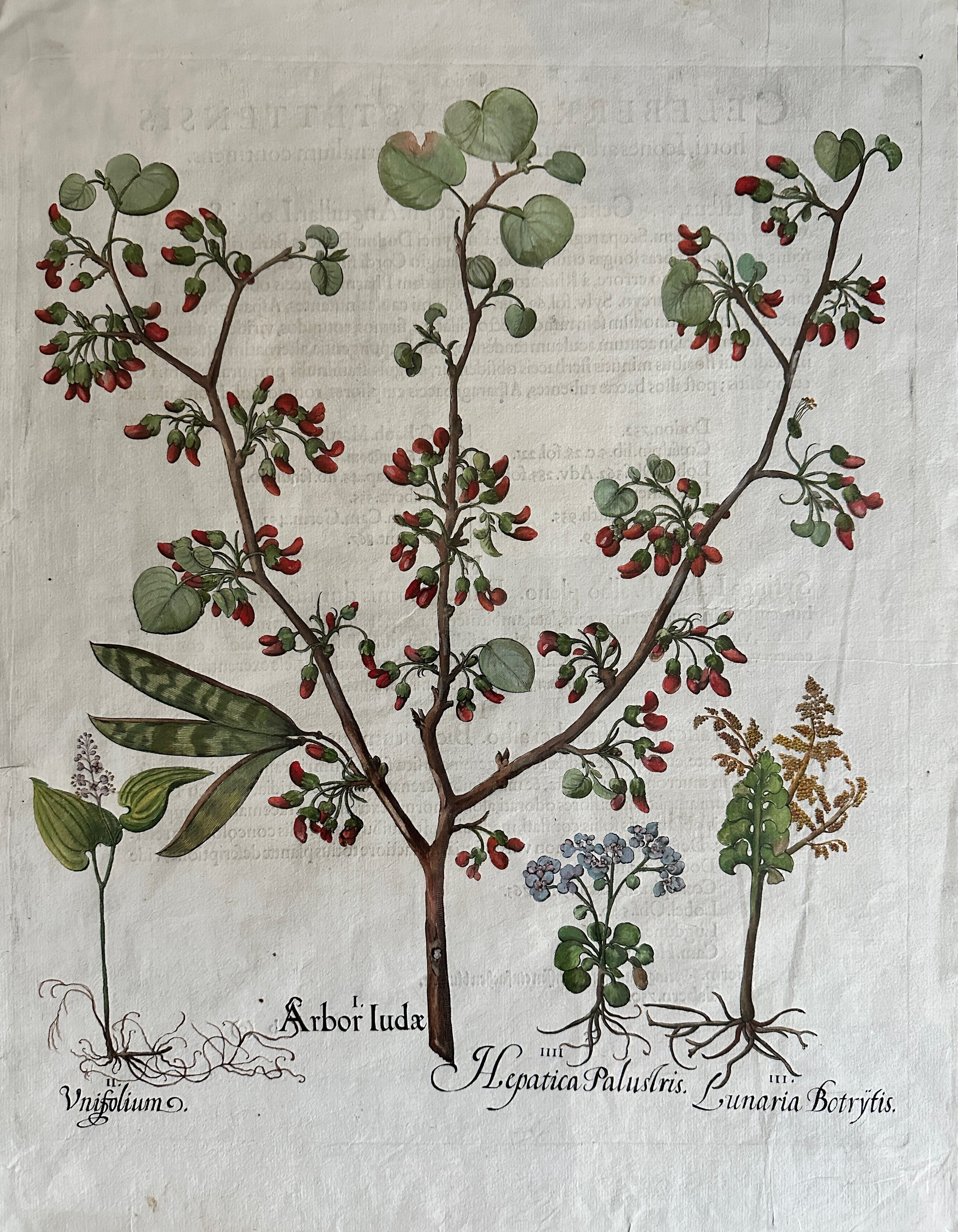Arbor Iodae, by Basil Besler, from Hortus Eystettensis Eichstatt: 1613 Hand-colored copperplate engraving (later color) 26 1/2” x 22”
Basil Besler’s (1561-1629) great botanical work is a landmark of botanical documentation and pre-Linnaean classification, as well as one of the most splendidly stylized and aesthetically powerful botanical works ever produced. Besler was an apothecary and botanist who managed the gardens of Bishop Johann Conrad in Eichstatt, Germany. The Bishop’s remarkable garden was one of the most extensive in Europe, containing a huge variety of European shrubs and flowering plants, as well as exotic specimens from Asia and the Americas. Besler used this encyclopedic resource as the basis for the Hortus Eystettensis, in which he studied and depicted over a thousand flowers, representing 667 species in all. With the Bishop’s patronage, he worked both as artist and publisher, directing a team of ten artists and engravers in creating 367 plates over 16 years. Published one hundred and fifty years before Linnaeus created his thorough system of classification, Besler’s great florilegium represents an impressive early attempt to classify plants for the benefit of botanists, doctors and apothecaries.
Basil Besler’s (1561-1629) great botanical work is a landmark of botanical documentation and pre-Linnaean classification, as well as one of the most splendidly stylized and aesthetically powerful botanical works ever produced. Besler was an apothecary and botanist who managed the gardens of Bishop Johann Conrad in Eichstatt, Germany. The Bishop’s remarkable garden was one of the most extensive in Europe, containing a huge variety of European shrubs and flowering plants, as well as exotic specimens from Asia and the Americas. Besler used this encyclopedic resource as the basis for the Hortus Eystettensis, in which he studied and depicted over a thousand flowers, representing 667 species in all. With the Bishop’s patronage, he worked both as artist and publisher, directing a team of ten artists and engravers in creating 367 plates over 16 years. Published one hundred and fifty years before Linnaeus created his thorough system of classification, Besler’s great florilegium represents an impressive early attempt to classify plants for the benefit of botanists, doctors and apothecaries.
Basil Besler’s (1561-1629) great botanical work is a landmark of botanical documentation and pre-Linnaean classification, as well as one of the most splendidly stylized and aesthetically powerful botanical works ever produced. Besler was an apothecary and botanist who managed the gardens of Bishop Johann Conrad in Eichstatt, Germany. The Bishop’s remarkable garden was one of the most extensive in Europe, containing a huge variety of European shrubs and flowering plants, as well as exotic specimens from Asia and the Americas. Besler used this encyclopedic resource as the basis for the Hortus Eystettensis, in which he studied and depicted over a thousand flowers, representing 667 species in all. With the Bishop’s patronage, he worked both as artist and publisher, directing a team of ten artists and engravers in creating 367 plates over 16 years. Published one hundred and fifty years before Linnaeus created his thorough system of classification, Besler’s great florilegium represents an impressive early attempt to classify plants for the benefit of botanists, doctors and apothecaries.

